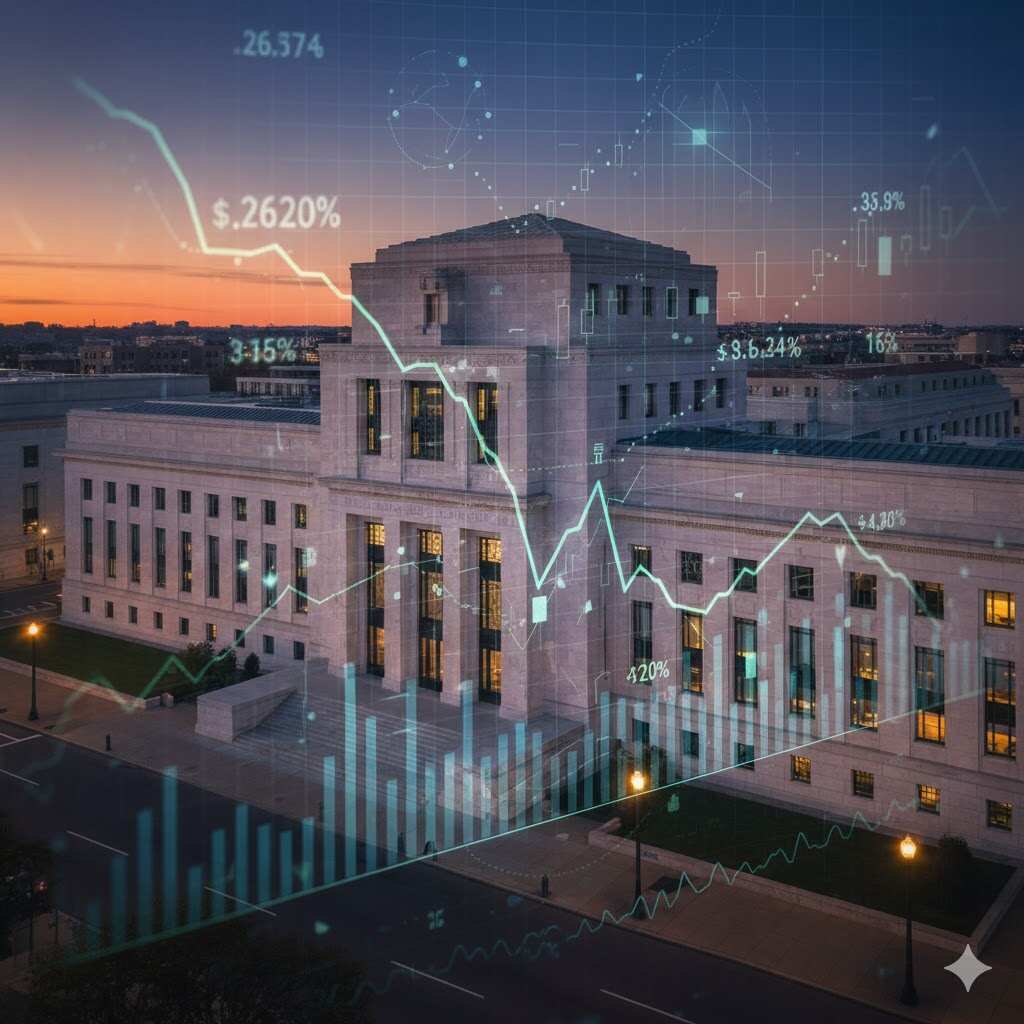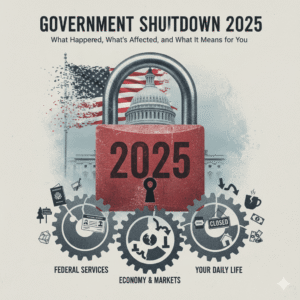The financial world is buzzing as speculation grows over a possible Fed rate cut in 2025. After months of moderating inflation and slower job growth, the U.S. The Federal Reserve appears closer to lowering interest rates for the first time in more than two years, a decision that could ripple across mortgages, credit cards, savings accounts, and investment portfolios.
Analysts now expect a 0.5% rate cut as early as December 2025, signaling optimism that inflation will remain contained while the economy avoids a hard landing. Yet, while a Fed rate cut might lift confidence, its impact varies widely for borrowers, savers, and investors.
Why the Fed May Cut Rates in 2025
The Federal Reserve changes its benchmark federal funds rate to balance inflation and growth. After aggressively hiking rates between 2022 and 2024 to cool soaring prices, inflation is now trending closer to the Fed’s 2% target, creating space for potential easing.
Recent U.S. Labor Department reports show cooling wage growth and easing consumer demand both signs that price pressures are softening. This shift gives policymakers an opportunity to reduce rates without reigniting inflation.
Economists say the Fed is trying to support growth while maintaining stability, navigating the fine line between progress and precaution.
How a Fed Rate Cut Affects Borrowers
Lower Mortgage Rates
A Fed rate cut usually leads to lower borrowing costs. Mortgage rates though indirectly linked to the federal funds rate tend to fall as overall market yields decline. This could benefit homebuyers and those refinancing in late 2025.
Each 1% drop-in mortgage rate can improve affordability by nearly 10% for median-income households, potentially reviving the housing market.
Cheaper Auto and Personal Loans
When the Fed reduces rates, banks typically lower interest on auto loans, student loans, and personal lines of credit. Consumers planning major purchases could see meaningful savings in monthly payments.
Lower Credit Card APRs
Variable-rate credit cards, tied to the prime rate, often follow the Fed’s direction. A rate cut could ease APRs, providing relief to millions of Americans managing revolving debt.
Impact on Savers and Investors
Lower Returns on Savings
While borrowers benefit, savers face declining yields. High-yield savings accounts and certificates of deposit (CDs) that offered 5% returns in 2024 could drop closer to 4% once rates fall.
Financial experts recommend laddering CDs or securing fixed-rate products early to preserve returns.
Stock Market Boost
Stocks often rally after a Fed rate cut because cheaper borrowing encourages corporate investment and consumer spending. Sectors like real estate, technology, and consumer goods historically perform well in easing cycles.
However, analysts caution that over-enthusiastic rallies may fade if economic growth weakens too sharply.
Bonds and Fixed Income
Bondholders usually benefit as falling rates push bond prices higher. Long-term Treasuries and corporate bonds often deliver strong gains during the months following a rate cut.
Investors should still diversify across maturities to balance yield with stability.
Potential Risks of a Fed Rate Cut
While a rate cut can stimulate growth, it also poses risks:
- Reigniting Inflation: Easing too early could fuel higher demand and rising prices.
- Weaker U.S. Dollar: A lower rate environment may reduce dollar strength, affecting trade competitiveness.
- Asset Bubbles: Easy credit can inflate housing and stock markets beyond fundamentals.
Policymakers must weigh short-term consumer relief against long-term financial stability.
What Borrowers Should Do Now
- Lock In Rates Early: Monitor Fed announcements and secure loans before market price in cuts.
- Refinance High-Interest Debt: Use lower rates to consolidate expensive credit-card balances.
- Adjust Savings Strategy: Shift funds into short-term accounts before yields decline.
- Stay Flexible: Maintain emergency savings to weather rate fluctuations.
How Investors Can Position for 2025
- Favor Dividend Stocks: Companies with strong cash flow and stable dividends tend to outperform when rates fall.
- Explore Bonds: As yields decline, long-duration bonds may offer attractive total returns.
- Watch Inflation Data: Fed policy direction depends on monthly CPI and PCE reports.
- Diversify Globally: A weaker dollar could support international equity returns.
Investors who align early with the Fed’s direction often outperform markets by anticipating liquidity shifts.
The Bigger Picture: The U.S. Economy in Transition
A Fed rate cut in 2025 would mark a major shift in post-pandemic policy. It signals the Fed’s confidence that inflation is under control and that the economy can sustain growth without overheating.
For consumers, lower borrowing costs could ease financial pressure. For businesses, cheaper credit may unlock investment and innovation. For savers, adapting to a lower-yield world will require smarter allocation and flexibility.
Ultimately, 2025 may redefine how Americans balance growth, inflation, and financial resilience, shaping the next chapter of the U.S. economy.





